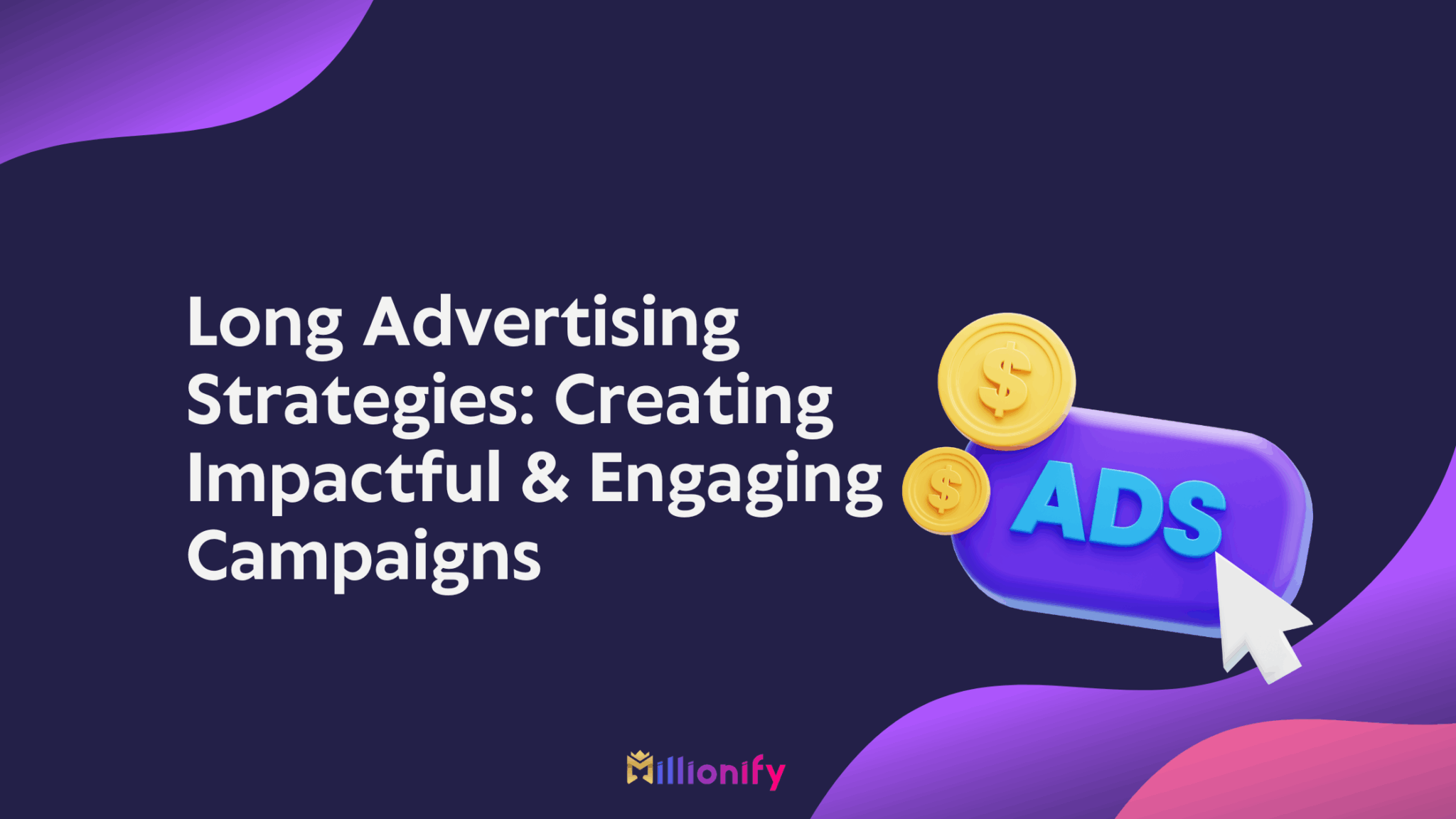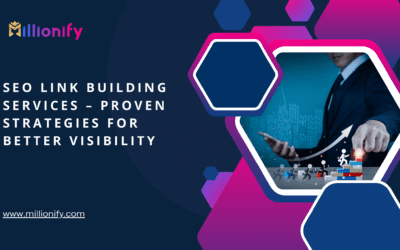When was the last time an ad really stuck with you? You know, the kind that pops into your head months or even years later? That, my friend, is the power of long advertising. It’s not about quick wins; it’s about playing the long game—building trust, telling a story, and leaving a permanent mark.
In this article, we’ll dig deep into the art and science of long advertising strategies—how they work, why they matter, and how you can create campaigns that don’t just shout into the void but truly connect.
What is Long Advertising?
Long advertising isn’t just about running ads for a long period of time (although that’s part of it). It’s about:
- Crafting messages that unfold over time
- Building a brand narrative
- Deepening relationships with your audience
- Prioritizing longevity over immediate returns
Think of it like planting a tree. You don’t get shade the next day—you nurture it, water it, and eventually, you have a giant oak that’s impossible to ignore.
The Power of Long Advertising Strategies
Why does long advertising work so well? Here’s the magic:
| Reason | Impact |
|---|---|
| Builds Trust | People buy from brands they trust, and trust takes time. |
| Creates Emotional Connections | Long storytelling triggers emotions, making brands memorable. |
| Strengthens Brand Identity | Consistent messaging carves a clear brand image. |
| Increases Lifetime Value | Loyal customers are way more profitable than one-time buyers. |
| Beats Short-Term Competitors | While others sprint, you win the marathon. |
Fun Fact:
Brands using long-term strategies have 47% higher brand awareness and 36% better customer retention rates compared to those focused solely on short-term tactics.
Key Elements of a Successful Long Advertising Campaign
Let’s break it down—you can’t just post randomly for years and expect magic. Successful long advertising needs a few ingredients:
1. A Clear Core Message
If your brand were a person, what would it stand for? Your message needs to:
- Be authentic
- Stay consistent across all channels
- Resonate emotionally
Think of it as your brand’s “North Star.” Always point toward it.
2. Compelling Storytelling
Stories are how humans have connected for thousands of years. A good long ad campaign unfolds a story over time, pulling audiences deeper into your world.
Tips for storytelling:
- Introduce characters (your customers, your team, your product)
- Create a journey (conflict, climax, resolution)
- Keep it real (authentic > perfect)
3. Strategic Patience
Rome wasn’t built in a day, and neither is a memorable brand. Long advertising requires patience.
- Set milestones instead of expecting overnight success
- Measure incremental growth (followers, engagement, sentiment)
- Celebrate small wins
4. Multi-Platform Presence
You gotta be where your people are. That means mixing:
- Social media
- Email marketing
- Content marketing
- Traditional media (TV, radio, print)
- Events and sponsorships
Consistency across platforms reinforces your message in the audience’s mind.
5. Emotional Resonance
Ads that make people feel something stick around.
Whether it’s joy, nostalgia, or inspiration, always aim to evoke emotions. Dry facts might inform, but feelings transform.
How to Plan a Long Advertising Strategy That Wins
So, how do you actually build a long advertising campaign that people love (and that works)?
Step 1: Define Your Long-Term Goal
Start by asking yourself:
- Where do we want the brand to be in 1 year? 3 years? 5 years?
- What feelings or ideas do we want associated with us?
Without a clear goal, you’re just tossing darts in the dark.
Step 2: Know Your Audience Inside-Out
Use data, surveys, conversations—whatever it takes to truly get your audience:
| Demographic Info | Psychographic Info |
|---|---|
| Age, gender, location | Values, attitudes, lifestyle |
| Income, education | Hobbies, interests, motivations |
Remember: Selling to “everyone” is selling to no one.
Step 3: Develop Your Brand Voice and Visual Identity
Your tone, language, fonts, colors—they should feel cohesive. When someone sees your brand, they should instantly recognize it.
- Nike screams empowerment.
- Apple whispers innovation and minimalism.
- Coca-Cola beams happiness and nostalgia.
What will you scream, whisper, or beam?
Step 4: Map Out Your Content Plan
Create a content calendar that spans months or even years.
Content types to consider:
- Evergreen blogs and videos
- Seasonal campaigns tied to holidays/events
- User-generated content contests
- Behind-the-scenes peeks
- Long-form storytelling series
Pro Tip: Batch content creation to stay consistent without burning out.
Step 5: Analyze, Optimize, Repeat
Data is your best friend. Watch:
- Engagement rates
- Conversion rates
- Customer feedback
Tweak your strategy based on real-world feedback. It’s a living, breathing thing, not a set-it-and-forget-it deal.
Real-World Examples of Killer Long Advertising
Let’s look at brands that absolutely crushed it with long advertising:
Coca-Cola: “Share a Coke”
Started in 2011, still going strong. By personalizing bottles with names, Coca-Cola built deep emotional connections that lasted for years.
Dove: “Real Beauty”
A masterclass in consistent storytelling about redefining beauty standards. They stayed on-message for decades, becoming synonymous with authenticity.
Old Spice: “The Man Your Man Could Smell Like”
Yes, it started as a viral moment. But Old Spice kept the quirky storytelling alive across commercials, social media, and even partnerships—keeping the buzz going for years.
Common Mistakes to Avoid in Long Advertising
Even the best can stumble. Watch out for these pitfalls:
- Inconsistency (changing messages confuses your audience)
- Over-promising (setting expectations too high and failing)
- Neglecting new platforms (TikTok wasn’t around 10 years ago!)
- Ignoring customer feedback (you’re talking with them, not at them)
- Going silent (out of sight, out of mind)
Consistency beats intensity every time.
Benefits of Long Advertising Over Short-Term Campaigns
Still wondering if it’s worth it? Here’s a breakdown:
| Long Advertising | Short-Term Advertising |
|---|---|
| Builds brand loyalty | Focuses on quick sales |
| Strengthens emotional connections | Emphasizes features and pricing |
| Establishes authority | Risks being forgettable |
| Higher lifetime customer value | Often leads to churn |
| Sustainable growth | Spike-and-drop sales pattern |
Would you rather be a shooting star…or the North Star?
The Future of Long Advertising
Guess what? Long advertising is only getting more important.
With attention spans shrinking, the brands that can stay in consumers’ heads without shouting louder are the ones that will win. Authenticity, emotional depth, and strategic consistency are the future.
Expect more:
- Interactive storytelling (AR/VR ads!)
- AI-personalized long journeys
- Deeper brand-consumer collaborations
The brands that think in decades, not quarters, are the ones that dominate the future.
Conclusion
Long advertising isn’t about throwing money at a never-ending ad campaign—it’s about weaving yourself into the fabric of your audience’s lives. It’s about consistency, authenticity, emotional storytelling, and playing the long game when everyone else is obsessed with quick wins.
The next time you brainstorm your marketing strategy, ask yourself:
Are we building a campfire that will burn brightly for a season—or a lighthouse that will guide generations?
Need a partner to help you plan your brand’s long advertising journey?
Millionify, the expert digital marketing agency, specializes in creating strategic, heartfelt, and unforgettable long advertising campaigns tailored just for you.
FAQs
1. What’s the main difference between long advertising and regular campaigns?
Long advertising focuses on emotional connection, storytelling, and long-term brand loyalty, while regular campaigns often chase quick sales with time-limited promotions.
2. How long should a long advertising campaign last?
There’s no hard rule, but think in terms of years, not weeks. Many successful campaigns evolve and continue for 5–10 years or more!
3. Can small businesses benefit from long advertising strategies too?
Absolutely! In fact, small businesses can build deeper local trust and loyalty through consistent, authentic messaging over time.
4. Is it expensive to run a long advertising campaign?
It can actually be more cost-effective over time! Instead of constant rebranding and shifting gears, you build sustainable momentum with steady investment.
5. How do you measure success in long advertising?
Track metrics like brand recall, customer lifetime value, engagement rates, emotional sentiment, and loyalty over time—not just immediate clicks or sales.



